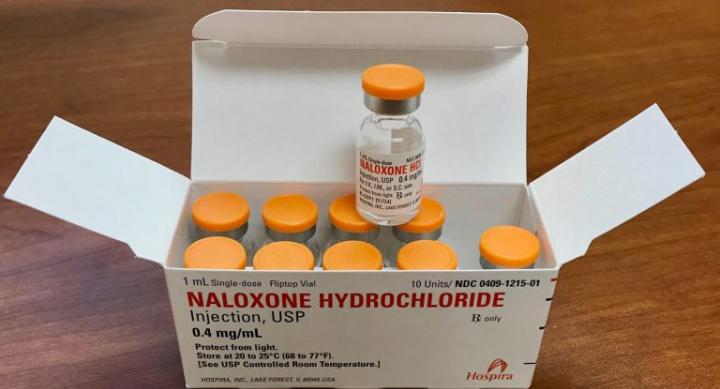
Naloxone is a medication used to block the effects of opioids, especially in overdose.
A recent article in the Journal of the American Pharmacists Association (JAPhA) from College of Pharmacy professors emphasizes the pharmacist’s irreplaceable role in opioid harm reduction, and how a number of studies have documented a lack of readiness among pharmacists to dispense naloxone and inadequate willingness or ability to provide sterile syringes.
Written by Clinical Assistant Professor Lucas G. Hill, Pharm.D., BCPS, BCACP, Clinical Assistant Professor Kirk E. Evoy, Pharm.D., BCACP, BC-ADM, CTTS, and Assistant Professor Kelly R. Reveles, Pharm.D., Ph.D., BCPS, the article addresses the ongoing devastating effects of the American opioid crisis, and how current methods for addressing the issue, such as prescription monitoring programs, tamper-resistant formulations, and prescribing limits, have failed to reverse rising rates and may result in those with opioid dependency to turn to more potent or dangerous opioid sources.
While pharmacists continue to play a crucial role in tackling the deleterious effects of the opioid crisis, many pharmacies continue to lack stocks of naloxone, a medication used to block the effects of opioids, especially in overdose, or are unwilling or unable to dispense the drug without a prescription. Other methods, such as distribution of clean needles, are also inadequately implemented in pharmacies across the country and would do a lot to reduce overdoses and deaths resulting from opioid abuse.
Read the abstract and full article in the Journal of the American Pharmacists Association (JAPhA).
For more information on opioid harm reduction, visit the Operation Naloxone website. Operation Naloxone is an interprofessional collaboration from faculty and students at The University of Texas at Austin College of Pharmacy, Steve Hicks School of Social Work, and Texas Overdose Naloxone Initiative. It provides overdose prevention and response education to students, health professionals, and the public to combat the opioid crisis using harm reduction strategies.

